Grow: Song of the Evertree is a vast ocean of daunting mechanics. It is a farming sim, city-building sim, life management sim, and creature collect-a-thon with light adventure elements rolled into one.
Unfortunately, while the ocean is wide, it’s not very deep.
Grow: Song of the Evertree Review — An Adventure in Disharmony

The opening introduces you to the land of Alaria, a place protected by The Evertree, an ancient entity powered by The Song. One day, The Song, and its connection to the people of Alaria, shattered, allowing The Withering to take over the land. Your character, the last Everheart Alchemist, stayed behind to bring back The Evertree by creating a World Seed and restoring The Song.
Though the stories about this land and these characters are interesting and one of Grow‘s high points, the problems in Grow: Song of the Evertree start early. The opening is incredibly slow, not truly beginning until about five hours in.
The main issue in these first few hours is that Grow throws too many mechanics at you at once, and learning them all veers into tedium quickly.
The first of the many things Grow teaches you is farming, which all takes place on branch worlds created by placing a World Seed on an altar on The Evertree. The neat part of this process is that you can shape how a world looks and what plants it contains by creating a World Seed with different flavors of essences, a variable type of currency in Grow. A World Seed made up of Dry, Parched, and Prickly essences, for example, will create a branch world closer in makeup to a desert than one made of different essences.
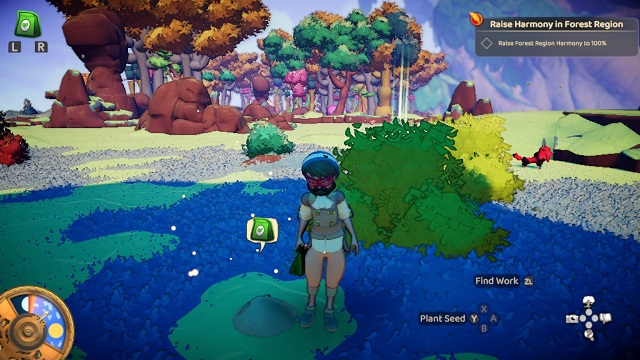
Despite that one trick, farming is the least engaging part of Song of the Evertree. There’s intrinsic satisfaction in building efficient farms in other similar games, but Grow doesn’t have that. Specifically, structuring branch worlds is impossible.
Plots that can be cultivated into plants are randomly placed around an area, and instead of making them into manageable, orderly rows that can be seeded and watered efficiently, Grow forces you to fully cultivate plots when you find them.
Stray rubble must be hammered away from an area. Then, after switching to a seed pack, seeds can be planted on the plot. Then, switching to the watering can allows you to water that plot before moving to the next one. Repeating the process dozens of times becomes grating quickly, and farming a branch world boils down to a mad dash of finding all of the interactable squares in whatever chaos layout the game provides, then going through the numerous motions to grow crops.
It sounds like such a small problem, but with how long it takes to cultivate a plot, it’s a mechanic that slows down the whole experience.
The next thing you learn in Grow is town management. It plays out how one would expect a town management sim to play, where you’ll buy buildings from a menu with some of the farmed resources and place those buildings around the available build area.
These buildings range from houses to shops like bakeries and general stores. When the airship dock is repaired, tourists from other worlds will want to move in. If you provide these NPCs homes, you’ll be able to assign them to stores. After being assigned a worker, that store will become functional and generate Myora, Grow‘s primary form of money.
The town management section is more satisfying than the farming section but still has problems with how it ties into story progression.
A Harmony Stone unlocks with each town area. These give you a to-do list of tasks to unlock the next town area. These tasks ask you to do things like “Decorate five houses three times” or “Have 14 people move into the area.” They add a goal to each area — which is nice — but after completing a Harmony Stone, I would abandon continually customizing and building the previous town area to work on the next one.
There isn’t enough reason to engage with the other aspects of town management past what the Harmony Stone wants. Each villager has skills that can be upgraded, and each building has star ratings that can be increased, mechanics that I chose not to interact with because doing so would mean putting off unlocking more of the world.
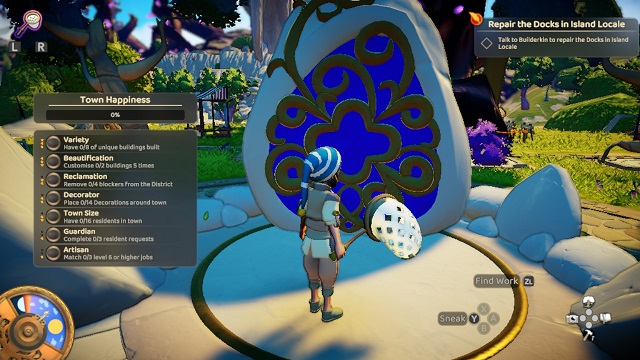
Delaying unlocking more of the overworld is especially punishing since the overworld contains the most successful parts of Song of the Evertree.
Exploring the content-rich world of Alaria is inherently satisfying. Areas are full of things to do, like cutting down trees and capturing bugs. There are caves to be discovered and explored. Figuring out how to open them, then exploring them to find actually useful treasures, is a true highlight.
While exploring these areas, it’s also possible to find bigger puzzle dungeons. These are all delightful to solve and visually intriguing. The puzzles are mostly 3D platforming challenges but could be based around one of the farming mechanics used in a unique, engaging way.
Dungeons never overstay their welcome; when I feel like I’m ready for a dungeon to end, it does. Each one hides a piece of the shattered Song, too, so completing one is always rewarding.
The adventure elements provide a cohesively designed slice of Grow that stands in contrast to the confusing decisions behind the management sections. Running around the cleared sections is where Grow: Song of the Evertree really sings.
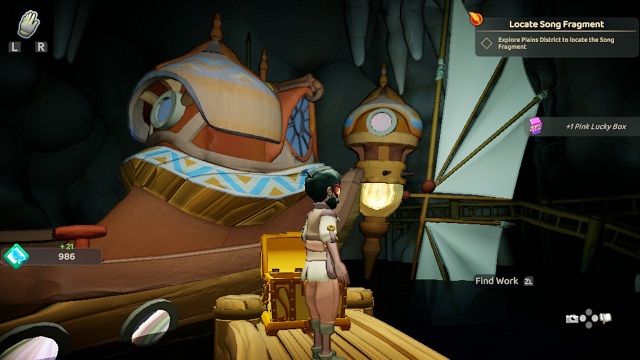
In addition to the joys of the adventure sections, it’s hard not to be captivated by Grow’s soundtrack. Each song is dynamic and layered. String sections and piano parts bounce back and forth trading leads in a wonderful soundscape. Coming into the Plains District with the music switching to my favorite song is affecting every time.
In contrast to the music, the visuals are a mixed bag. From the opening cutscene through the rest of the experience on Nintendo Switch, texture pop-in is common, and there are far too many framerate issues. Prideful Sloth pared down the graphic quality and resolution for this version when compared to others, but they persist despite Grow’s cartoony, cutesy graphics. These problems can be alleviated somewhat by turning down the Field of View, but it’s a less than ideal solution.
Despite the technical issues, it’s still possible for Grow to look good on Switch. Walking back to your house after the sun sets when it’s lit up against the night sky and the purple glow of Withering roots is truly beautiful. However, the visuals elsewhere aren’t always up to that standard.
House decorations, new hairstyles, and unlockable clothes all look worse than their default counterparts, which makes getting cosmetic rewards undesirable and disappointing. Most of the human characters have the same face. An area called Every-where actually hurts my eyes to look at — it’s an incredibly red landscape with red items stacked on top of each other.
Grow: Song of the Evertree Review — The Bottom Line
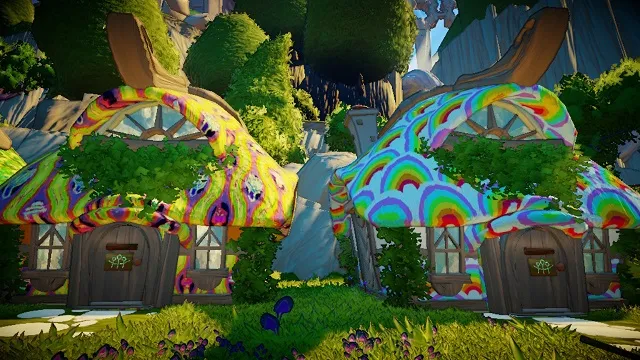
Pros
- Beautiful soundtrack
- Overworld is fun to explore
- Puzzle elements are satisfying
Cons
- Tedious farming mechanics
- unrewarding town management mechanics
- Many aspects are visually unappealing
- Technical issues
Grow: Song of the Evertree is trying to be too much. There are too many ideas and systems for them all to gel harmoniously. It’s the friction between the systems that has me either scratching my head while playing it or, at worst, getting frustrated.
Throw technical problems into the mix with a dash of undesirable rewards, and Grow is mostly disappointing. There could be a good game here, but it’s hard to hear through all the noise.
[Note: The code for Grow: Song of the Evertree used in this review was provided.]

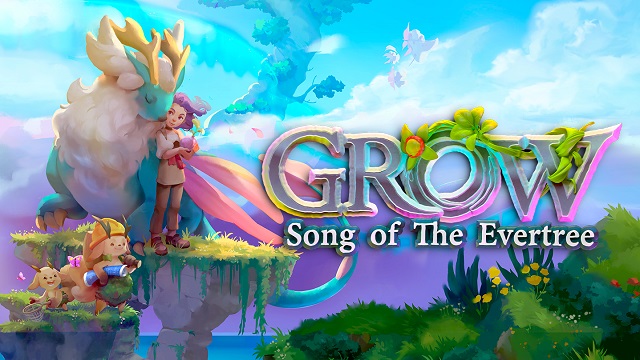





Published: Nov 26, 2021 12:47 am